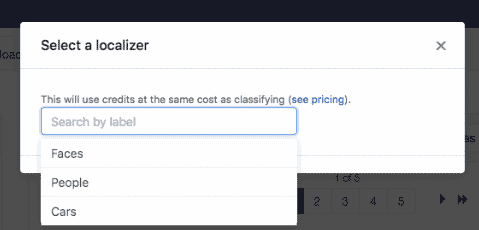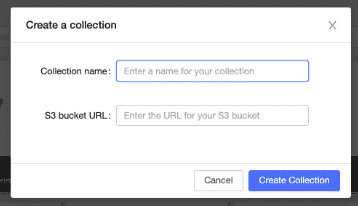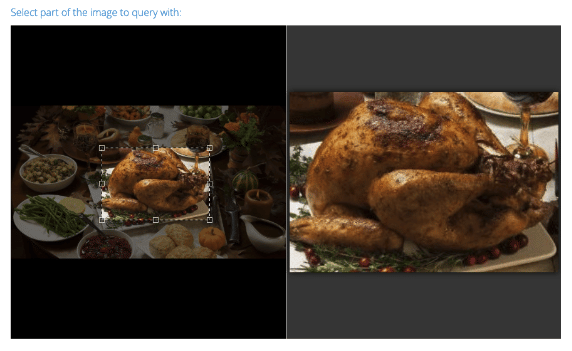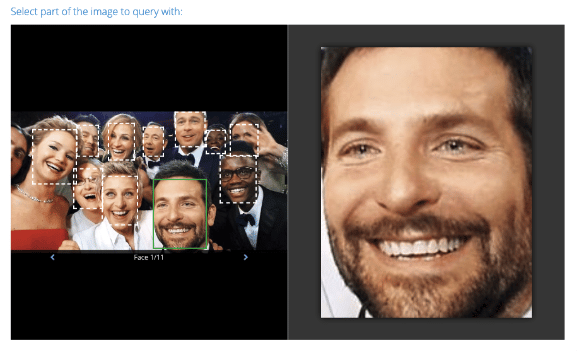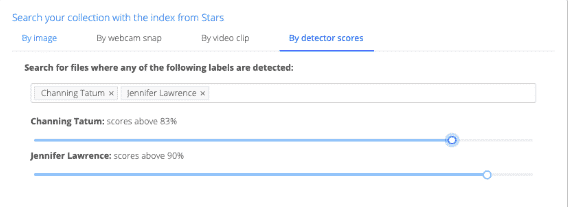Computer Vision Information: FAQs & Tutorials
Categories
Getting Started
Matroid is a Computer Vision AI company whose no-code software gives users the power to build, deploy, and maintain detectors, allowing companies to search visual media for people, behavior, objects, defects, and events. Based on the latest in deep-learning and computer vision research, Matroid’s capabilities can improve processes, safety, and operational efficiencies across industries including manufacturing, healthcare, security, agriculture, and transportation.
Creating a detector
With Matroid you can create a custom detector that can detect whatever you're interested in.
To create a custom detector, click on "Create a new detector" on the home page. Enter labels for the objects you'd like to detect. For example, this detector will be able to detect tigers and lions:

Next, you'll be taken to the detector creation wizard. If there are public detectors that detect similar things, you'll be shown a list of suggested detectors:
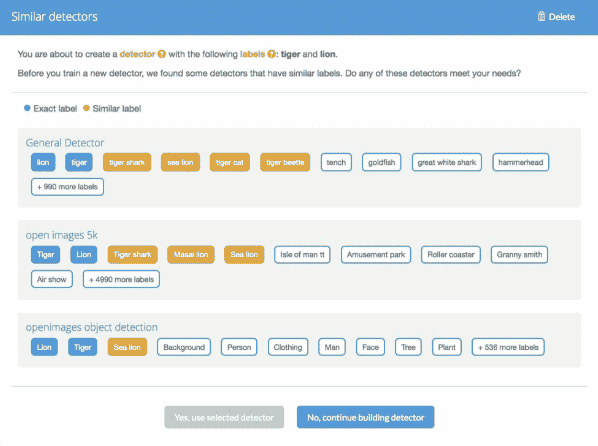
If none of these detectors meets your needs, click on "No, continue building detector" at the bottom. Follow the setup steps in the wizard to create a new detector. Once setup is complete, you'll be taken to the studio, where you'll be able to upload and curate training data before training your new detector.
Using a detector
Matroid's developer API is designed to make it easy to bring the power of computer vision to your app. From the detector page, click on the “Call API” tab to see examples of how to use the Matroid API.
Improving a detector
The most common cause of poor detector performance is low quality training data. To improve an existing detector, redo it, paying attention to the following guidelines for training data:
- A label's training images should be accurate examples of that label. You should include a variety of training images that show the object you are trying to detect from different angles and in varying lighting conditions.
- It may be helpful to have images in your training set that are similar to what your detector is likely to encounter in the field. For example, if you are going to run your detector on an outdoor camera feed, you should include training images with varied lighting conditions simulating daytime, evening, and night conditions. It would also help to add actual images from the outdoor camera as training examples, if available.
- When a training image contains extraneous details or objects in addition to the object of interest, you should add annotation bounding boxes around the object of interest. This helps your detector focus on the relevant part of the image during training.
- Adding negative examples to your detector's labels can help improve detection quality, especially when your detector is getting confused by examples of objects similar to the object you are trying to detect. For example, if you are building a dog detector, you might want to add images of wolves as negative images for your dog class. Providing feedback for incorrectly classified images will also help improve detector accuracy when you retrain it.
- Make sure you have the appropriate number of training images for the detector type you are trying to create. Matroid recommends the following minimum numbers of training images:

Publishing a detector
You can request to publish any of the Matroid detectors you have created that meet the publication criteria listed below. If the publication request is approved, your detector will appear in Matroid’s list of public detectors.
To publish one of your detectors, go to the “My Detectors” page and click on the detector’s name. Click on the "Publish" button and then fill out the name, description, and categories for your detector. This information will help other Matroid users find your detector.
To make a publication request, your detector must meet the following criteria:
- It must have been trained with at least 20 images per label.
- It must have a training accuracy of at least 90%. If your detector has lower than 90% accuracy, you will see a warning on the detector page.
The Matroid team will review your detector for quality, uniqueness, and appropriateness. You will be notified by email once the request is approved or denied.
Streams
From the streams page, click on "Register new stream". Enter the stream information accordingly:
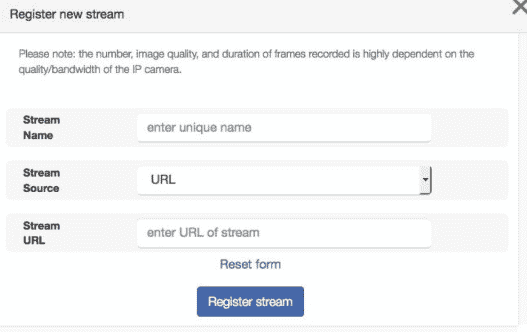
Enter the details for your camera and the live stream should display. To make a test recording from your stream, click on the stream name. Then, click on the "New" button under "Recording" in the sidebar, and select a duration.
To view your recording, select it and click on "View Recording Slideshow".

Computer Vision Kit
Matroid makes computer vision simple. We've built an easy-to-use and intuitive studio for creating and deploying computer vision detectors. From there, you can use these detectors to search visual media for objects, animals, people, even specific faces - no programming required!
Follow the computer vision kit's audio instructions along with this guide to create a stream. By default, we use our own Everyday Objects detector to find people and cars on your new stream. Any time a person or car comes into the camera's field of view, a detection notification will show up on both the navigation bar and the stream's calendar page. It's that easy!
Setup
- Power on the camera and remove the plastic film from the lens.
- Wait a few seconds for the audio instructions to begin.
- Navigate to /camera, then either create an account or login with an existing account.
- Register the camera by entering a stream name and your WiFi settings.
- Click “Next” to generate a QR code, then scan the code when instructed.
- Once the camera has connected to Matroid, you'll be automatically redirected to the new livestream.
- Follow along with the stream tour to learn a bit more about the available features.
Similarity search
Matroid Similarity Search lets you build visual search indexes over vast amounts of image and video data and search those indexes for content similar to a query image. You can search your collection using these indexes in milliseconds. It’s similar to reverse image search with 2 key differences:
- The collection is your data
- You can search with custom indexes that focus on the image characteristics you care about, like facial or specific object features
After creating a collection, you can choose a detector to build a search index with. When the search index is ready, you can search your collection for media similar to another query image. You can also search for media in your collection with detector scores above specified thresholds.
Request A Demo Today
Let us show you how the power of computer vision can transform your organization



